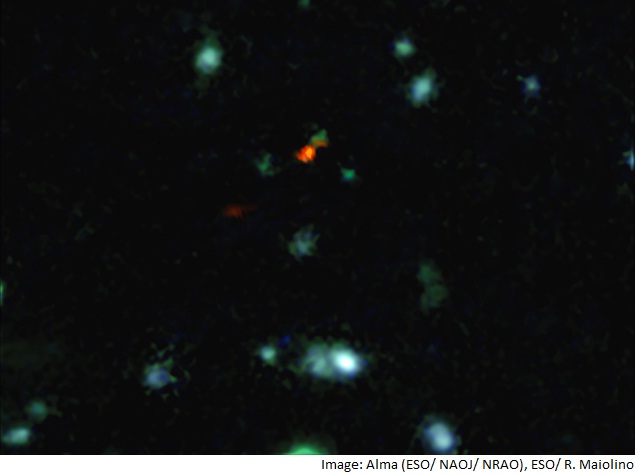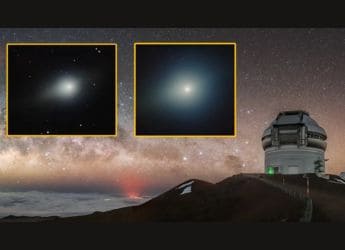- Home
- Science
- Science News
- Astronomers Observe Interiors of Ancient Galaxies
Astronomers Observe Interiors of Ancient Galaxies

Observations from the Atacama Large Millimeter/submillimeter Array (Alma) allowed astronomers to start to see how the first galaxies arose and how they cleared the cosmic fog during the era of reionization, according to an article in the Monthly Notices of the Royal Astronomical Society.
"This is the most distant detection ever of this kind of emission from a 'normal' galaxy, seen less than 1 billion years after the Big Bang," study co-author Andrea Ferrara said.
"For the first time, we are seeing early galaxies not merely as tiny blobs, but as objects with internal structure."
A team of astronomers led by Cambridge University's Roberto Maiolino trained the Alma array on galaxies that were known to be seen only about 800 million years after the Big Bang, the explosion that scientists believe gave birth to the universe.
The astronomers were not looking for the light from stars, but instead for the faint glow of ionized carbon coming from the clouds of gas from which the stars were forming.
"They concentrated on rather less dramatic, but much more common, galaxies that reionized the Universe and went on to turn into the bulk of the galaxies that we see around us now," the ESO said.
The telescope was able to detect a faint but clear carbon signal of intense brightness in a galaxy designated as BDF2399.
Alma is an international partnership of the ESO, the US, Japan, Canada, Taiwan and South Korea, in cooperation with Chile.
Alma, the largest astronomical project in existence, sits on the Chajnantor plateau, 5,000 metres above sea level.
Get your daily dose of tech news, reviews, and insights, in under 80 characters on Gadgets 360 Turbo. Connect with fellow tech lovers on our Forum. Follow us on X, Facebook, WhatsApp, Threads and Google News for instant updates. Catch all the action on our YouTube channel.
Related Stories
- Samsung Galaxy Unpacked 2025
- ChatGPT
- Redmi Note 14 Pro+
- iPhone 16
- Apple Vision Pro
- Oneplus 12
- OnePlus Nord CE 3 Lite 5G
- iPhone 13
- Xiaomi 14 Pro
- Oppo Find N3
- Tecno Spark Go (2023)
- Realme V30
- Best Phones Under 25000
- Samsung Galaxy S24 Series
- Cryptocurrency
- iQoo 12
- Samsung Galaxy S24 Ultra
- Giottus
- Samsung Galaxy Z Flip 5
- Apple 'Scary Fast'
- Housefull 5
- GoPro Hero 12 Black Review
- Invincible Season 2
- JioGlass
- HD Ready TV
- Laptop Under 50000
- Smartwatch Under 10000
- Latest Mobile Phones
- Compare Phones
- Redmi Note 15 5G
- Redmi Note 15 Pro 5G
- Redmi Note 15 Pro+ 5G
- Lava Play Max
- Poco C85 5G
- Honor Magic 8 Lite
- Jolla Phone
- Realme P4x 5G
- Asus ProArt P16
- MacBook Pro 14-inch (M5, 2025)
- OnePlus Pad Go 2
- Poco Pad M1
- Just Corseca Skywatch Pro
- Honor Watch X5
- Acerpure Nitro Z Series 100-inch QLED TV
- Samsung 43 Inch LED Ultra HD (4K) Smart TV (UA43UE81AFULXL)
- Asus ROG Ally
- Nintendo Switch Lite
- Haier 1.6 Ton 5 Star Inverter Split AC (HSU19G-MZAID5BN-INV)
- Haier 1.6 Ton 5 Star Inverter Split AC (HSU19G-MZAIM5BN-INV)

















